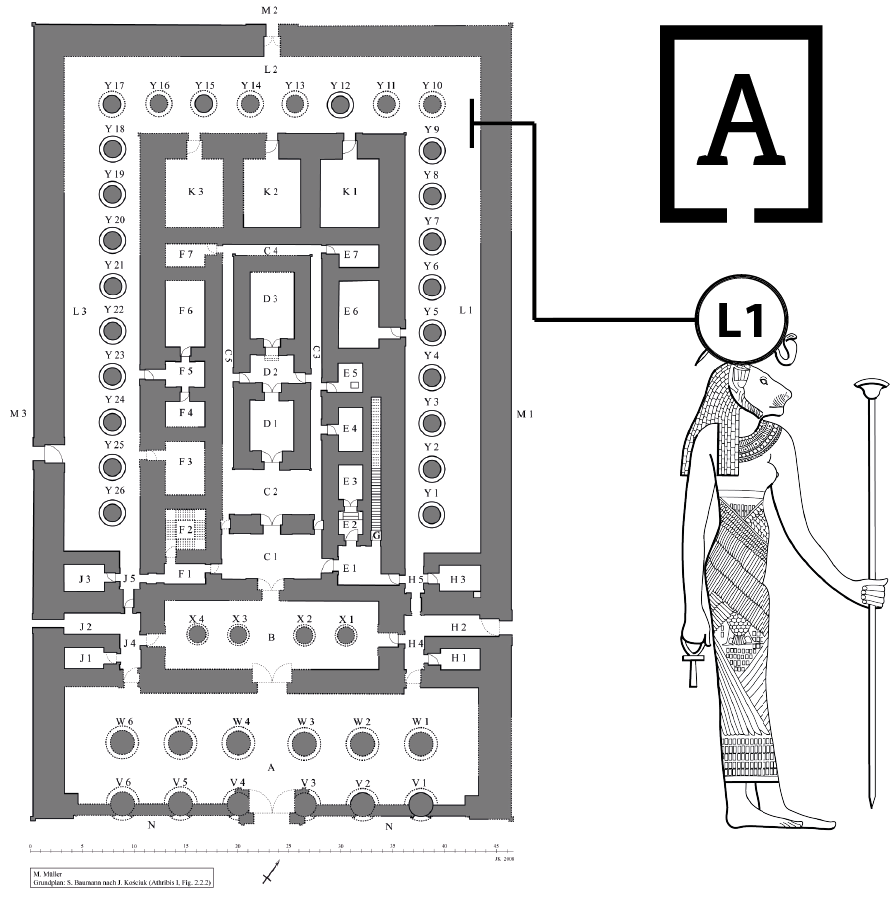Station L1
Colonnade L 1
The ambulatory (L1, L2, L3) surrounds the inner rooms on three sides and is, thus, unique in Egyptian temple architecture. Until 2012, its eastern part L1 was largely buried under blocks (weighing up to 20 tons) that had fallen from the walls and ceiling. Below these blocks there were archaeological occupation layers.
The Late Roman water conduit that was cut into the floor seems to be associated with the use of some rooms as dying workshops by the Copts. In the south-eastern corner there is a brick installation of unknown height and purpose. Further north a small domed oven, which was probably used for baking bread, was found. While the room was often used as an animal stable, it mostly functioned as a rubbish dump, as is indicated by numerous objects of daily life.
At the base of the eastern and western walls there is a procession of offering bearers who represent the 22 Upper Egyptian nomes (administrative units) as well as many additional cult centres. Each nome can be recognized by distinctive hieroglyphs on the head of the offering bearer. The first register on the west wall preserves two important texts: The first, located in the southern part, is a 110 column inscription, that was recited during the Min festival (with parallels in the temple of Ramses III at Medinet Habu, Luxor). The second, located in the northern part, is a unique hymn to the lion-goddess Repit that enumerates her names in all the Egyptian nomes.
The bases of the columns are decorated with the protector deities of the papyrus thicket of Khemmis. This is the region where the young god Horus was raised by Isis and protected from his enemy Seth.
